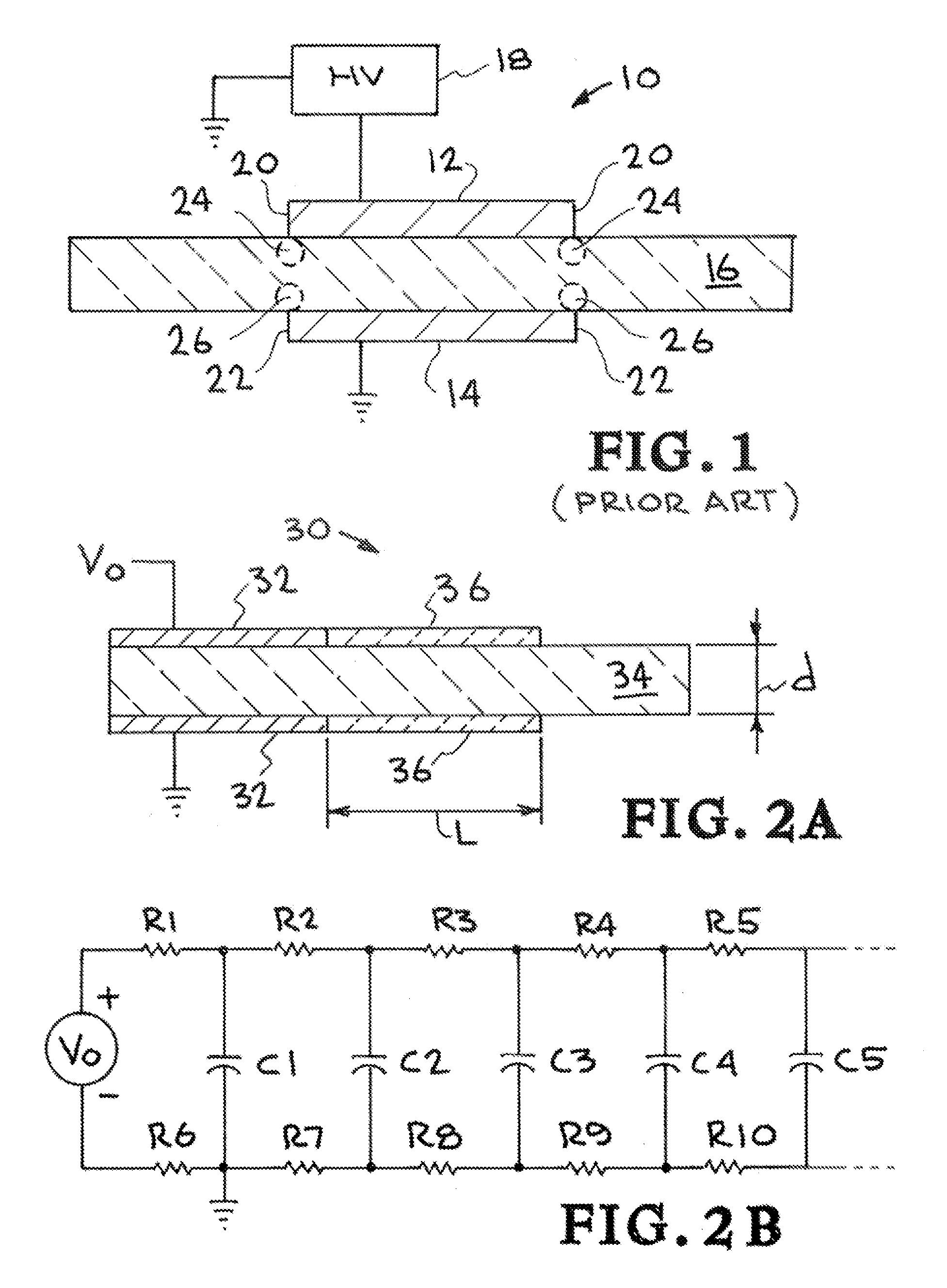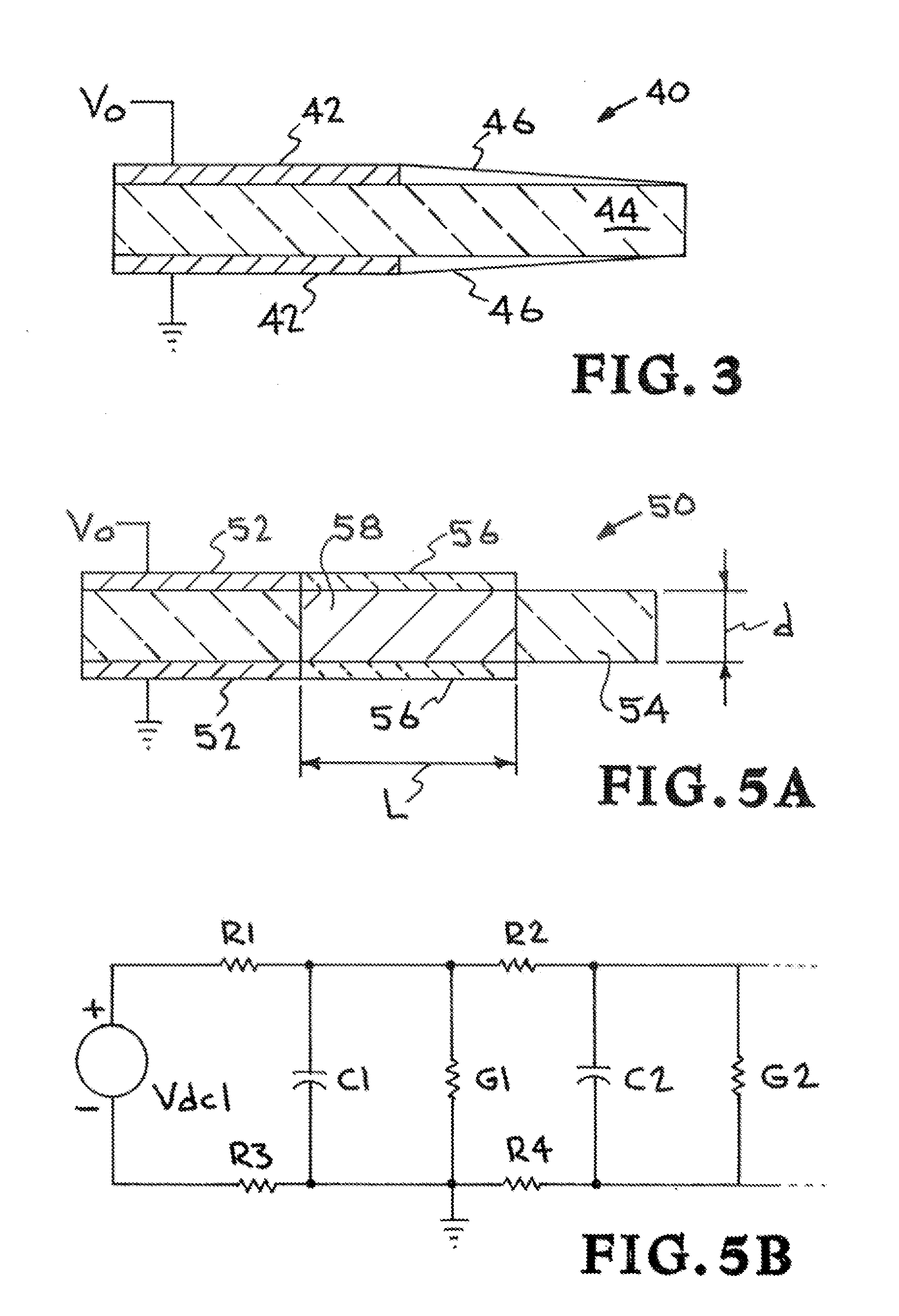Resistive foil edge grading for accelerator and other high voltage structures
a technology of resistive foil and high voltage structure, which is applied in the direction of variable capacitor, fixed capacitor details, fixed capacitors, etc., can solve the problems of limiting the ability to build compact high voltage systems, insulators to fail at significantly lower electric potentials than, and internal bulk breakdown of materials, so as to reduce electric field stress
- Summary
- Abstract
- Description
- Claims
- Application Information
AI Technical Summary
Benefits of technology
Problems solved by technology
Method used
Image
Examples
Embodiment Construction
[0027]Referring more specifically to the drawings, for illustrative purposes the present invention is embodied in the apparatus and method generally shown in FIGS. 2A, B through FIG. 9A, B. It will be appreciated that the apparatus may vary as to configuration and as to details of the parts, and the method may vary as to its particular implementation, without departing from the basic concepts as disclosed herein.
[0028]The invention applies to basic energy storage and transmission structures or devices, particularly compact structures or devices designed to receive high energy. The essential elements of these structures or devices are a pair of electrical conductors, separated by an insulator, across which a voltage is placed.
[0029]FIG. 1 shows a basic structure or device 10 formed of conductors 12, 14 on opposite sides of an insulator 16. A high voltage (HV) source 18 is connected across the two conductors 12, 14. Conductors 12, 14 are typically made of metal. Insulator 16 may be a ...
PUM
 Login to View More
Login to View More Abstract
Description
Claims
Application Information
 Login to View More
Login to View More - R&D
- Intellectual Property
- Life Sciences
- Materials
- Tech Scout
- Unparalleled Data Quality
- Higher Quality Content
- 60% Fewer Hallucinations
Browse by: Latest US Patents, China's latest patents, Technical Efficacy Thesaurus, Application Domain, Technology Topic, Popular Technical Reports.
© 2025 PatSnap. All rights reserved.Legal|Privacy policy|Modern Slavery Act Transparency Statement|Sitemap|About US| Contact US: help@patsnap.com



